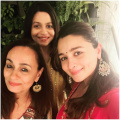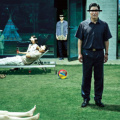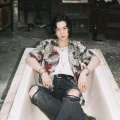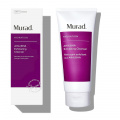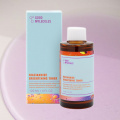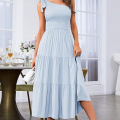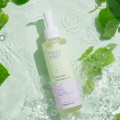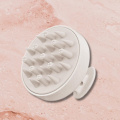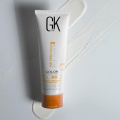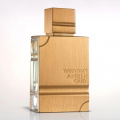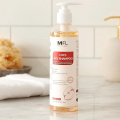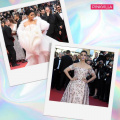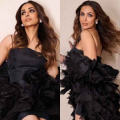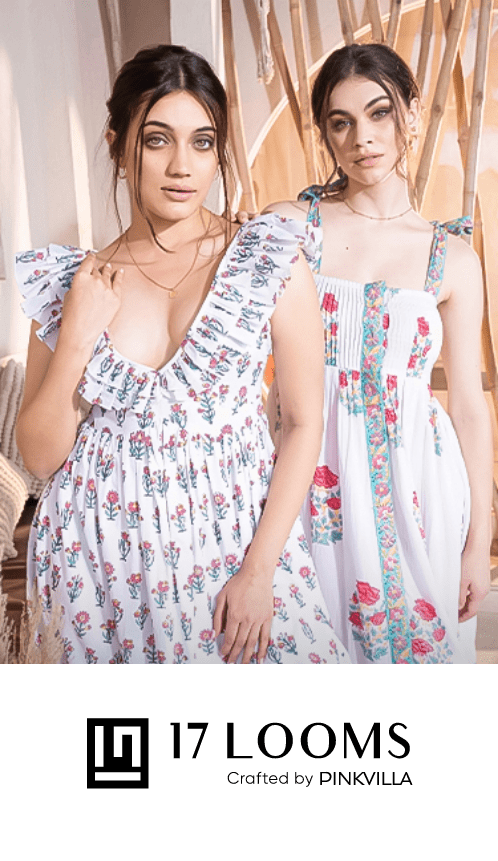Different Types of Hairlines to Know in Men And Women
Hairline is a dominant facial characteristic. However, with different types of hairlines out there having a better understanding of them may come in handy.
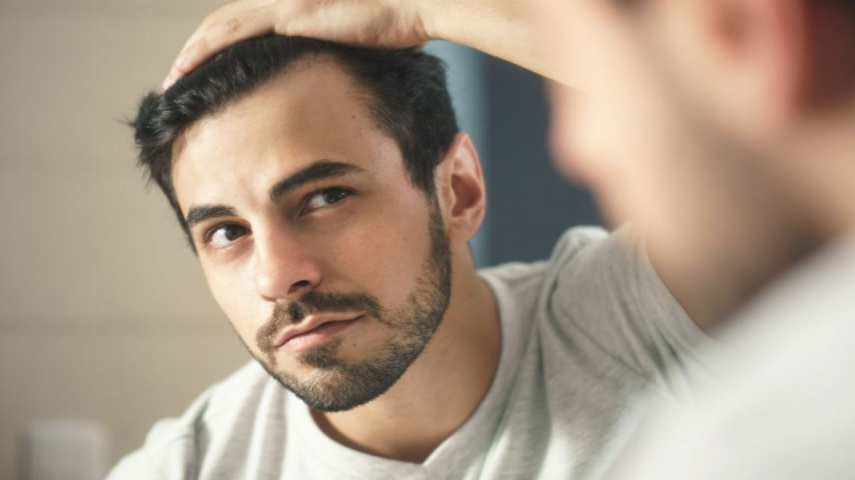
Hairline gives your face a distinctive appeal. Not just that, a good hairline accentuates your facial appearance and adds to your natural charm. However, there are many types of hairlines and some may prove unappealing. They occur due to genetic disorders, lifestyle, and hormonal imbalances. Our contributor, Dr. Harikiran Chekuri, a dermatologist, cosmetologist and hair transplant expert says, “Certain lifestyle choices can have a negative effect on hair health and the appearance of your hairline. Smoking, for example, decreases blood flow to the scalp, leading to weakened follicles and unhealthy hair growth. Alcohol consumption has a similar effect on hair health, as it can cause dehydration and reduce the amount of nutrients available to scalp and follicles. Eating an unhealthy diet can also lead to hair loss, as poor nutrition reduces the body's ability to produce healthy hair. Finally, stress can have a negative impact on hair health, leading to increased levels of cortisol in the body. This can, in turn, lead to a weakened hairline and increased shedding.”
Hairlines may also undergo change with age, hairstyles, or different psychological conditions. There are variations of hairlines in men and women that give them a unique appearance with regard to each other. Clearly, no two hairlines are exactly the same and it may come in handy to have a diverse knowledge about hairlines and the factors contributing to their changes through different phases. Read through this article to find everything you may want to know about your hairline type and how to protect its natural shape.
What Is a Hairline?
Hairline is recognized as the second most important feature of gender identification within the upper third of the face (1). It has often been associated with average height and width of the forehead and the region above the eye sockets called the supraorbital region (2). Hairline shapes are seen as round, rectangular, and bell-shaped, and almost 19% of people also have m-shaped hairlines as well (2). However, the anterior hairline may be affected by a lot of factors such as race, age, forehead shape, and hair loss progression (3). Individuals with straight hair and light skin may also demonstrate an unnatural abruptness of the hairline (4). There is evidence indicating that the disfigurement of the hairline may cause a lot of physical and psychological problems in individuals (5).
Hairline types have also been segmented as:
- Frontal Hairline: Frontal hairline is the most important part of hair reconstruction (6). If you suffer from frontal hair loss, you may use a technique that uses ‘micrografts’ and produces a natural-looking soft frontal hairline (6).
- Temporal Hairline: The middle hair at the temporal hairline is similar to that of the eyebrows in terms of hair flow, angle, and density (7).
- Mid-frontal Hairline: Loss of hair in the elderly is mostly associated with mid-frontal hair loss and a study substantiates this fact (8). Almost 58% of women and 74% of men aged over 80 and more suffer from balding mid-frontal hairlines (8).
What Are the Different Hairline Types for Women?
Women’s hairlines may be characterized by (5):
- Rounded overall shape
- Optimized hair density
- Changing hairline height
- Minimized temples
According to a recent survey, hairline types in females include (5):
- Lateral mounds
- Widow’s peaks (or V-shaped hairline)
- Cowlick hairline
- Triangular hairline
- Low hairline
- Middle hairline
- High hairline
- Uneven hairline
- Rounded hairline
- Bell-shaped hairline
- Straight hairline
- Receding hairline (female pattern hair loss)
What Are the Different Hairline Types for Men?
A prototypical male hairline has an M-shaped pattern (5). In one study, almost 56% of men have upsloping hairlines, 36% have straight hairlines and only 9% had downsloping hairlines (6).
Anterior hairline in men may also be classified as (3):
- Rectangular hairline
- Round hairline
- Wave-shaped hairline
- Receding hairline
- Widow’s peak or (peak hairline)
- Uneven hairline
- Cowlick hairline
- Mature hairline
- Triangular hairline
However, according to the forehead ratio, the anterior hairline for men is categorized as (3):
- High hairline (H)
- Middle hairline (M)
- Low hairline (L)
Can You Change Your Hairline Type?
You can enhance the growth of your hair and reverse the damage done to the hairline by:
- Scalp Massage: Scalp massage has proven to result in increased blood circulation and enhanced thickness of the hair (7). Oils like coconut oil have a high affinity for proteins and penetrate deeply into the hair (8). Coconut oil, with its superior penetrating power, also protects the hair against the damage caused by grooming and UV exposure (9). Essential oils, with a topical activity too, have proven to cure scalp dysfunction, and intensify hair color and brightness (10).
- Healthy Diet: Nutritional deficiency may affect hair growth and hair structure (11). Lack of nutrients has also been associated with female pattern hair loss, androgenetic alopecia, and alopecia areata (11). A healthy diet, as such, will nourish not only your body but also make your hair healthy.
- Iron Intake: Iron deficiency has proven to be one of the causes of hair loss (11). And, as such iron intake might promote hair growth and prevent hair loss. Consuming iron daily has a lot of other benefits for your health so incorporating iron in your diet might be a good change.
- Consuming Vitamin D: Vitamin D has proven to facilitate smoother and rapid hair cycling (11). So, consuming Vitamin D might as well help you with hair growth and hair management without causing any adverse effects.
- Stress Release: Stress has proven to be one of the causes contributing to immense hair loss (12). It may both induce and aggravate hair loss and serious hair problems (12). As it is, hair does age and damage because of stress. So, exercise or relaxation might be something you may incorporate into your routine for long-term benefits. Our contributor, Dr. Harikiran Chekuri, suggests using mindfulness practices like meditation or yoga to manage stress levels and promote healthy hair growth. He adds, “Examples of low-impact exercises that promote healthy hair growth include walking, jogging, light resistance training, and yoga. When exercising outdoors, be sure to wear a hat or scarf to protect the scalp from sun exposure. By making the right lifestyle choices and implementing an exercise routine that works for you, you can maintain a strong and healthy hairline.”
- Changing Hairstyles: According to a survey, styling hair as ponytails frequently contribute to frontal hair loss in females (13). Reportedly, 79% of women suffering from frontal hair loss tied their hair in ponytails for 4 days or more a week (13). Changing hairstyles or ensuring you are not tying your hair too tightly might save your hair from a lot of unwanted pressure.
- Oral Minoxidil: Oral minoxidil has proven to be very effective as a primary treatment for hair loss especially androgenetic alopecia (14). It is also a safe treatment option for many hair disorders (15).
- Using a Mild Shampoo: The repeated use of shampoo containing selenium sulfide has proven to cause shedding of the hair (16). Other chemicals, antimicrobial agents, surfactants, and preservatives may also impair hair health (17). Switching to a mild chemical-free shampoo might be a good alternative.
- Avoiding Excessive Intake of Nutritional Supplements: Excessive intake of nutritional supplements, especially when you don’t suffer from any deficiency may cause hair loss (18). Unless recommended by an expert, you may avoid the consumption of nutritional supplements.
- Low-level Laser Therapy (LLLT): Low-level laser therapy has proven to be effective and safe for both men and women (19). It induces hair growth and enhances the stimulation of epidermal stem cells (19). Trying it once in a while might work for you.
What Is Considered a Good Hairline?
A good hairline for you would be the one that won’t make your forehead look larger or emptier. If your hairline makes your face appear rounder, that is also a pretty hairline to have. For women, the low and middle hairlines are quite attractive. Bell-shaped and straight hairlines also give a refined, feminine touch to women. As for men, a straight or low hairline is quite a handsome characteristic. A middle hairline isn’t bad to have as well. The closer the hairline is to your forehead creases, the fuller your hair appears and the less your forehead is exposed. So, whatever hairline you have, if it is not exposing too much of your forehead is a good hairline for you.
What Is Considered a Bad Hairline?
A bad hairline is one that might make your forehead appear way larger. It may also highlight or reveal your hair loss patterns. A receding hairline is dreaded by men and women alike as it exposes more of the forehead area and your hair thinning issues. Even though it’s most prominent in men, women too get an m-shaped hairline because of which their forehead sticks out unnaturally. Commonly known as widow’s peak, m-shaped hairlines might be triggered by genetics, hormonal imbalance, or age. A higher hairline in women is also considered bad as it appears similar to a receding hairline. For men, a deep m-shaped hairline is not a pleasant hairline as it reveals patterns of male hair loss. A high hairline in men also isn’t a good hairline as it makes your face and forehead appear excessively large
How Can You Protect Your Hairline?
- Don’t wear tight rubber bands or accessories that pull at your hair.
- Refrain from tying your hair tightly.
- Change hairstyles frequently.
- Use a gentle, clean comb.
- Avoid combing harshly or very quickly.
- Don’t comb wet hair as it contributes to hair loss.
- Try not to overexpose your hair to the sun and other environmental factors.
- Massage your hair with good hair oils.
- Use organic hair masks.
- Eat a balanced diet.
- Check the shampoo labels to avoid using sulfates and parabens.
- Don’t overwash your hair.
Conclusion
Hairlines give our hair and face a more refined and polished look. With different types of hairlines, hairstyles also have an important role to offer in defining facial shape. Furthermore, hairlines are associated with various other factors including age and genetics so understanding your hairline type is necessary. Having that knowledge might also help you in taking better care and reversing the damage your hairline suffers from time to time. You can also amplify your facial beauty by knowing your hairline type and ensuring the products and styling align with it. In most cases, you may also be able to change your hairline type, if that’s what you have been eager to do.
Contributor: Dr. Harikiran Chekuri, Medical Head - ClinicSpots





 JOIN OUR WHATSAPP CHANNEL
JOIN OUR WHATSAPP CHANNEL






